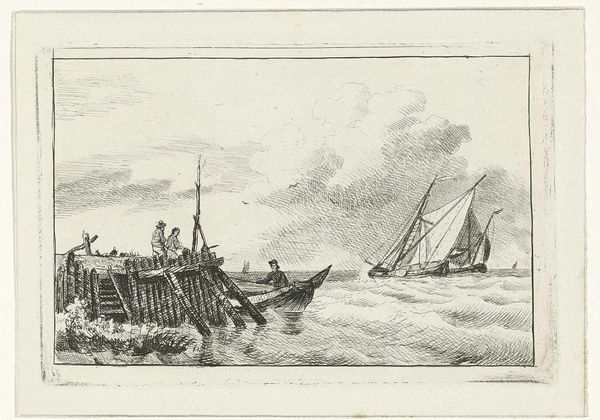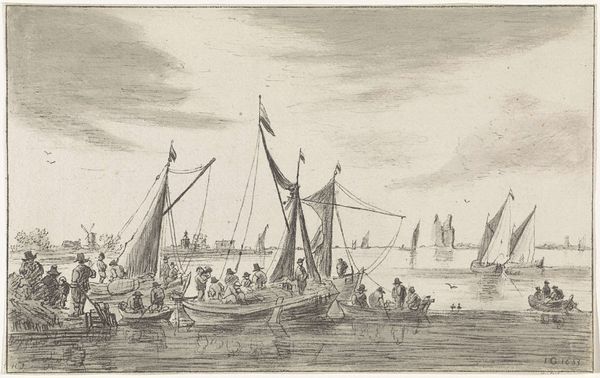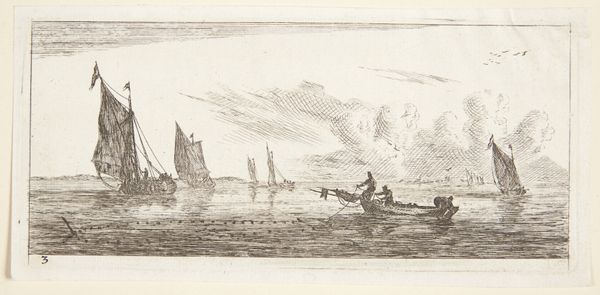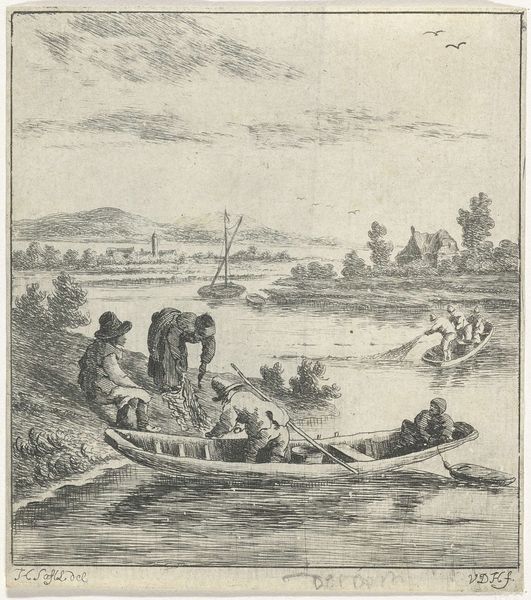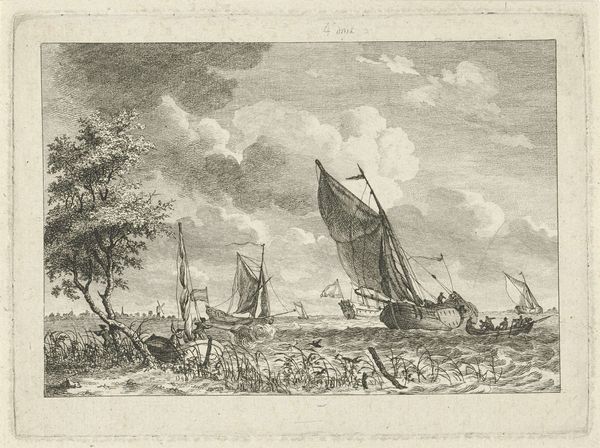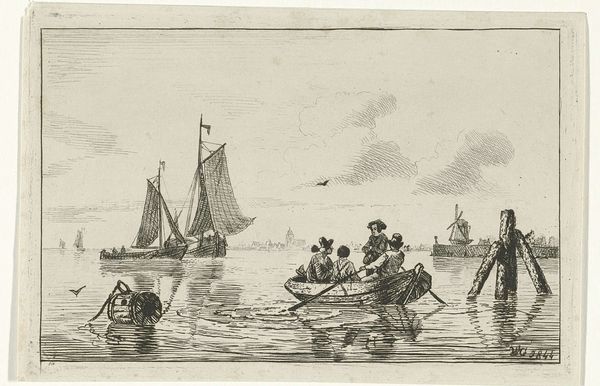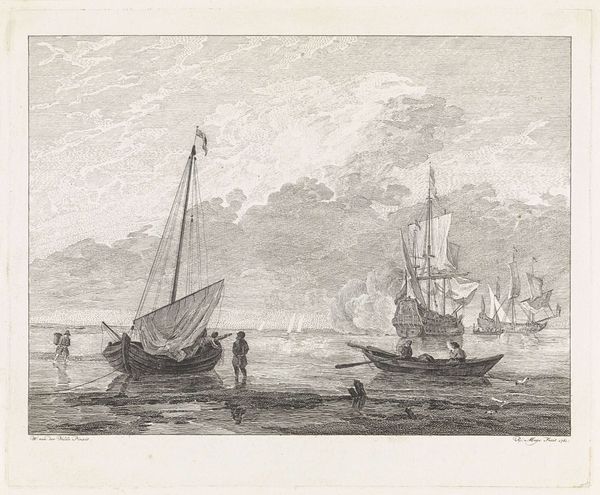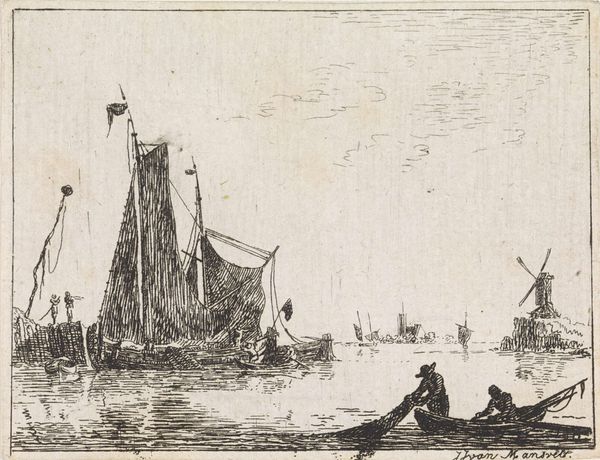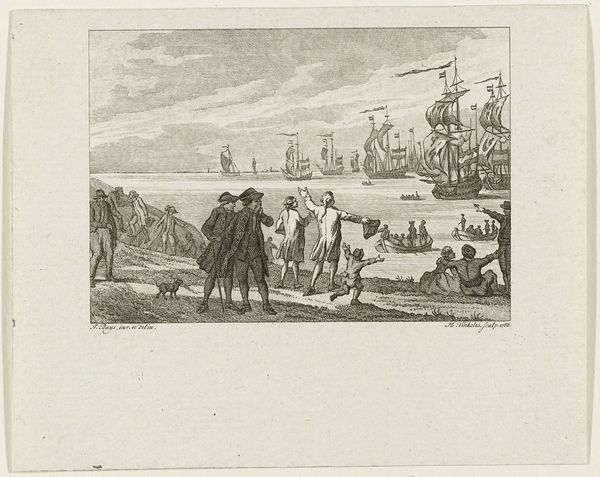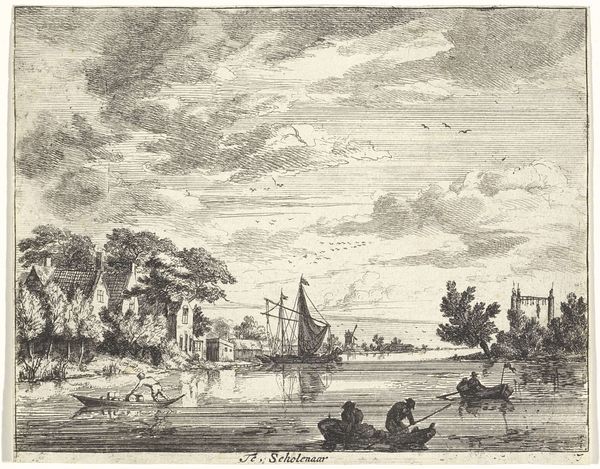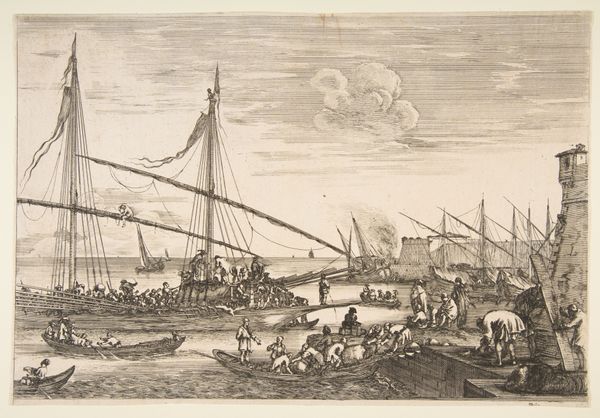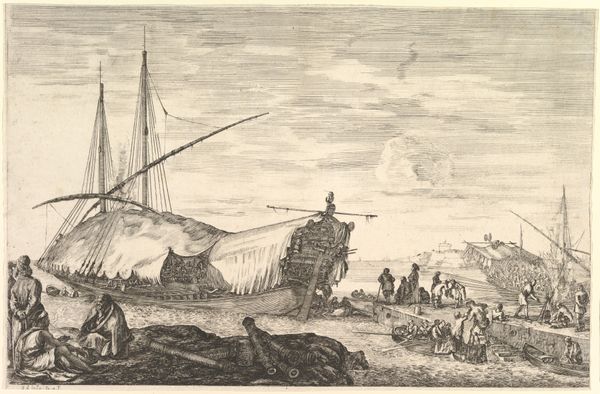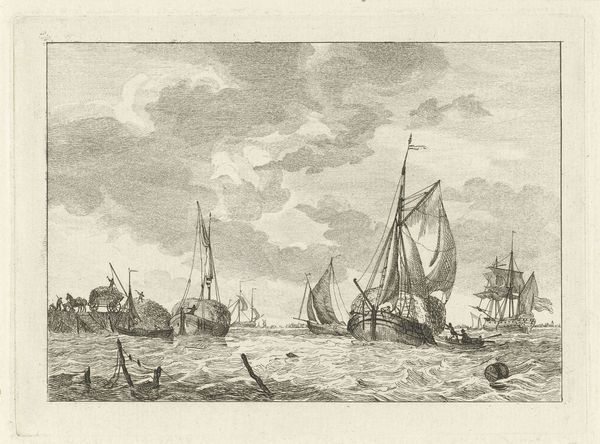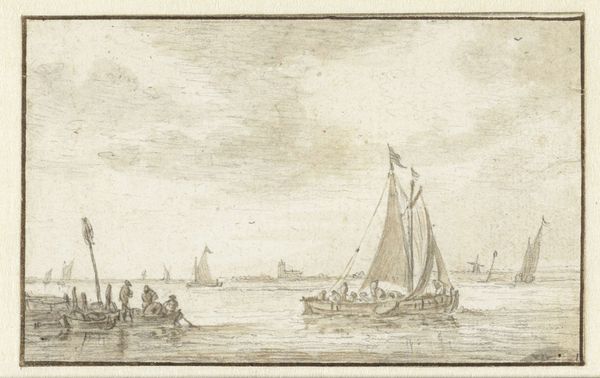
Dimensions: height 98 mm, width 137 mm
Copyright: Rijks Museum: Open Domain
Editor: Here we have Anthonij van der Haer's "Cows by the Water," an engraving likely made sometime between 1745 and 1785. It seems to depict a fairly ordinary scene, but what stands out to me is the way the artist renders the details with such intricacy, especially the clouds and water. What's your interpretation of this work? Curator: From a materialist perspective, I'm interested in the process of engraving. Think about the labor involved in producing this image—the skilled artisan meticulously carving lines into a metal plate, the access to materials such as copper or steel, the printing press and its operators making impressions on paper, which was an increasingly available and consumed material good. Editor: So, you see the print itself as an artifact connected to larger systems of production? Curator: Precisely. The subject is almost secondary to that. Consider also how such prints democratized access to imagery, and in what social and economic contexts they were circulated and consumed. Who owned them and where were they displayed? How did that shape viewers’ perceptions of rural life? What can the type of paper used tell us about Dutch papermaking techniques and trade in the 18th century? Editor: That’s fascinating. I was focusing on the idyllic image, but I hadn't considered the print as a commodity itself. Curator: It’s important to remember that art objects aren't just aesthetic experiences. They’re also products of specific material conditions and social forces. It pushes us to consider art's relationship to labor and economics. Editor: Right. Focusing on the engraving medium opens up entirely new lines of inquiry. It makes you appreciate all the unseen labor behind even seemingly simple images.
Comments
No comments
Be the first to comment and join the conversation on the ultimate creative platform.
